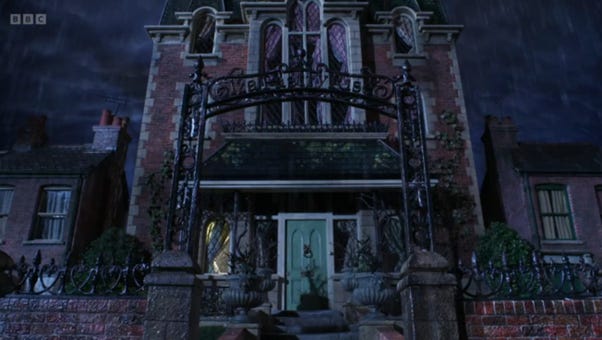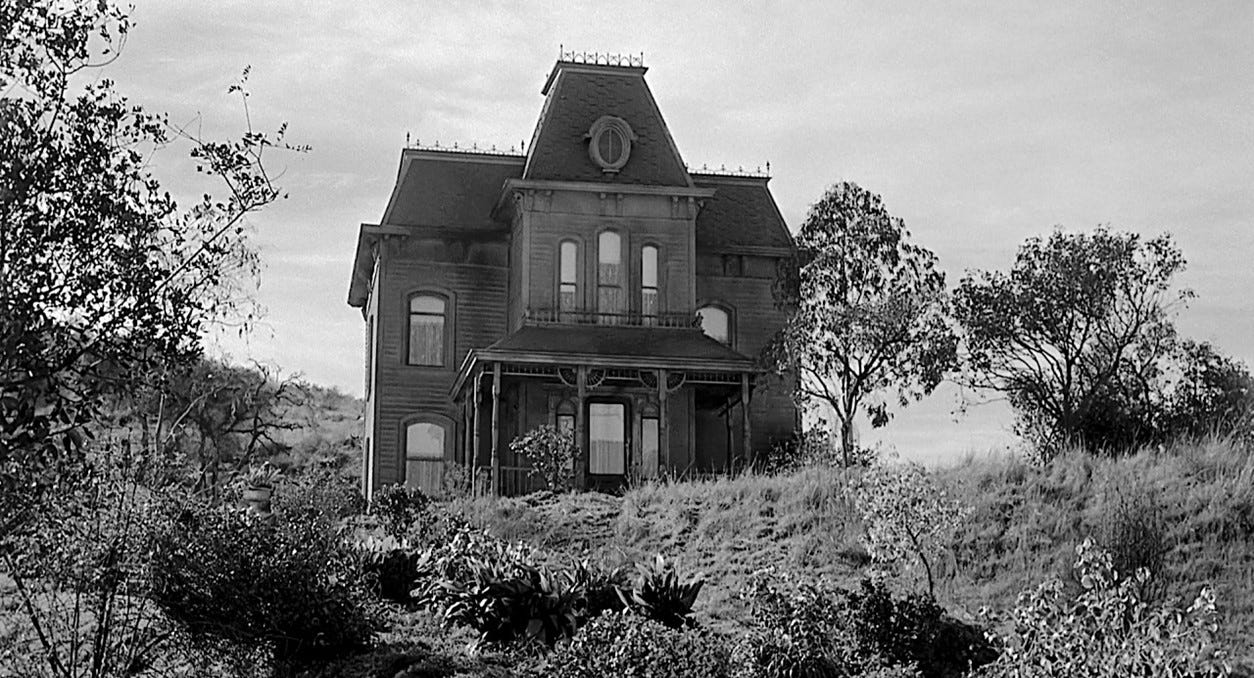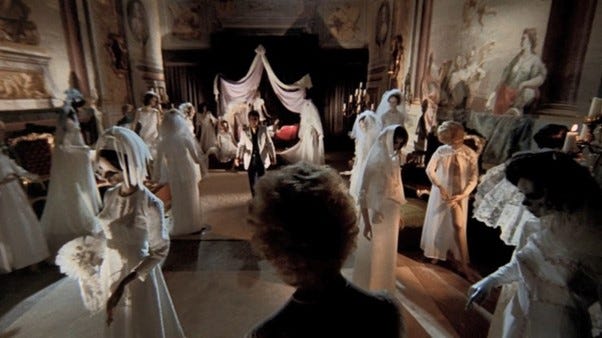Hitchcock on the staircase, Bava in the bedroom – Gromit finds Piella’s trophies in A Matter of Loaf and Death
Horror Moments, Wallace & Gromit Edition
‘Horror Moments’ is a light-hearted series examining horror-inflected scenes and themes in unexpected places. The ‘moments’ are published weekly on Thursday mornings, and I share bonus content on the history of magic, theatre, storytelling, and more on Monday afternoons – don’t forget to subscribe!
[Spoilers: A Matter of Loaf and Death (2008), Psycho (1960), Blood and Black Lace (1964), Hatchet for the Honeymoon (1970)]
We are nearing the end of the first ever horror moments series and there is only one more Wallace & Gromit film to consider before turning to a whole new set of source materials. The final film (for now, at least) is A Matter of Loaf and Death (2008), a return to the half-hour format of the first three Wallace & Gromit instalments.
Unlike Were-Rabbit, which substituted vegetable for human victims, Loaf and Death depicts actual murders as a serial killer starts picking off local bakers. This is bad news for Wallace who has set up a new baking business assisted by Gromit and a whole host of quirky inventions.
I very nearly made the first scene of Loaf and Death its own horror moment because it’s almost an exact parody of the opening of Halloween (1978): we watch from the killer’s perspective as they reach for the murder weapon (in this case, a rolling pin rather than a knife), and see the victim turn around and recognise the camera (“It’s you!” instead of “Michael!”) before being struck.
However, we’ve already looked at villain-vision camera tricks in Were-Rabbit so instead, my first moment from Loaf and Death is the sequence in which Gromit explores the house of Piella Bakewell, Wallace’s latest love interest.
There are two horror films which are prominently referenced here. The first is Alfred Hitchcock’s classic Psycho (1960), in particular the scene when detective Milton Arbogast investigates the suspicious motel.
Piella’s home ‘Old Pastry Rise’ somewhat resembles Bates Motel:
When Gromit pushes open the door he is met with an empty entranceway and a winding staircase just as Arbogast is. Could there be something waiting at the top of the steps?
In Psycho, the detective climbs the stairs slowly, quietly, the score itself seems to hold its breath as we wait expectantly for him to make a discovery that will blow the case wide open. Gromit, likewise, puts a foot on the step and begins to ascend—
Luckily for Gromit, we end the parallels with Psycho there and turn to a new source of inspiration as he uncovers Piella’s terrible secret.
In her upstairs bedroom he finds thirteen mannequins – a baker’s dozen – and twelve of them are wearing the aprons and hats of the recently murdered men.
Piella is our serial killer, and Wallace is due to be her final victim.
The combination of the mannequins and the sickly baroque style of Piella’s house, particularly the use of pink and purple light, here evokes Mario Bava’s slasher Blood and Black Lace (1964), where a string of fashion models is murdered by a masked killer.
It’s a great idea for a stalking sequence: the mannequins can cast shadows and form silhouettes that look human, building tension as the real threat disappears and reappears between them.
Bava used the same trick four years later in Hatchet for the Honeymoon (1970) where models who work for a particular bridal dress shop are murdered by its disturbed owner, a grown man who is still upset about his mother remarrying after his father’s death and is taking this out (of course) on beautiful young women.
As in Were-Rabbit, Aardman subverts the horror cliché of watching a string of young women being sliced apart by offering a different kind of victim: middle-aged male bakers. As a consequence, our serial killer is, unusually, female and next week we’ll arrive at our final horror moment from Wallace & Gromit where Loaf and Death references one of the greatest female face-offs in all horror cinema. Until then,
Happy nightmares everyone!
Horror moments are posted every Thursday and a wide variety of articles exploring the history of magic, theatre, storytelling, and more are published on Monday afternoons.


















Your piece captures the brilliance of how Wallace & Gromit incorporates horror film references in such an unexpected way. I loved how you linked scenes to Hitchcock and Bava while explaining the playful twist on familiar horror clichés. It’s a great mix of analysis and light-hearted fun, making this article a pleasure.
Rebekah- I’ve encountered Hitchcock’s work multiple times but have never looked at it from this angle. So interesting. Thank you for sharing. 🙏